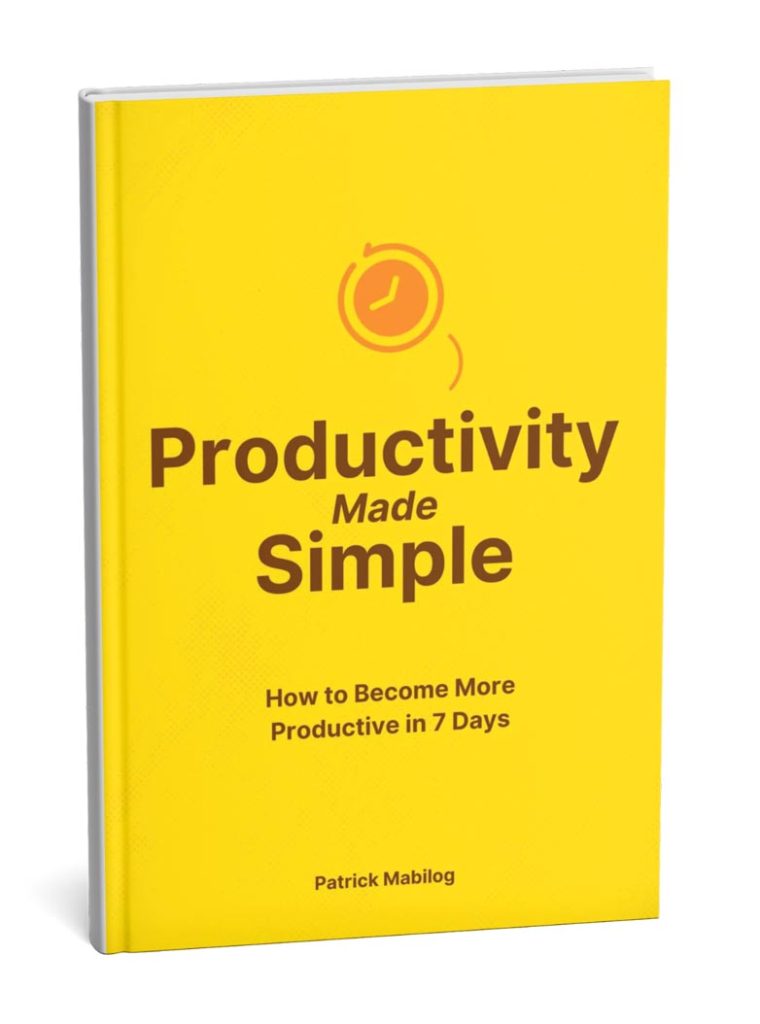If you believe a college diploma, a steady paycheck, and retirement after four decades will give you financial freedom, you might be clinging to a fading myth.
I never finished college. I was diving headfirst into starting my own business when I was eighteen years old. Seven months into the entrepreneurial journey, I knew this was what I was called to do.
Don’t get me wrong— I’m not saying school was completely useless. School taught me how to learn, but it didn’t teach me how to earn—or how to build true wealth. If you’re reading this, maybe you’ve felt the same tension: “I spent years in school, so why does making money still feel like a mystery?”
In this blog, we talk about how the real world of money works and how you can use these rules, systems, and trends to play the game in your favor.
The Four Levels of Income (and Why Your Diploma Only Nabs Level 1)
This deep dive topic is a direct reflection from a YouTube video from Ali Abdaal. If you want to watch the entire video on some of the key lessons in this blog, check it out below:
In the YouTube video, Ali talks about the four levels of income.
Level 1 – Employee (Active Income)
This is how most people earn money. You wake up, snag your coffee, and head to work—trading your time and skills for a paycheck. That’s Level 1. School trains you perfectly for this:
- You follow instructions like a champ (because teachers made you!).
- You specialize in one field—engineering, accounting, teaching, or something similar—ready to slot into a company.
- Grades reward showing up on time and memorizing facts.
But here’s the kicker: If you stop doing the work, the money stops. Your “worth” becomes two things: “How many hours did you work?” and “Does your boss think you’re awesome?”
When Warren Buffett was in college, he ignored most lectures and spent nights poring over library books about stocks and companies—topics never covered by his professors. He figured out early that knowing real businesses mattered far more than aceing exams.
So, if all you’ve ever known is “get a diploma, get a job, collect a pension,” you’re stuck at Level 1. It’s a solid foundation, but it doesn’t teach you how to build or own anything that grows while you sleep.
Level 2 – Self-Employed / Freelancer (High-Leverage Active Income)
In stage 2, you decide to hang out your own shingle. You still trade work for money, but now you set the price. You might juggle two or three clients at once, send your own invoices, and wrestle with taxes late at night. It’s both liberating and terrifying.
Benjamin Franklin was an American polymath— a writer, scientist, inventor, statesman, diplomat, printer, publisher and political philosopher. Early on, he ditched formal schooling early and became a printer’s apprentice. He learned negotiation and sales by selling pamphlets to neighbors, fielding crazy requests, and figuring out exactly what readers wanted.
Making mistakes in front of real customers taught him far more than any classroom lecture ever could. That’s what you want at Level 2. If you haven’t honed your sales skills and bookkeeping chops, you’ll feel like you’re drowning. But if you learn to pitch confidently, you’ll turn those occasional gigs into a higher-paying hustle.
Your mentality at this stage will say something like“Here’s the problem I solve, here’s how I solve it, and here’s why it’s worth your money.”
Level 3 – Business Owner–Operator (Mixed Active/Leverage Income)
Most people aspire to be at this level. You hire people to do the core work—coding, brewing coffee, or building products. Then you focus on keeping the whole ship afloat. Suddenly, your toughest question is no longer “How do I finish this project by Friday?” but “How do I get my team to crush their targets?”
Some things that happen here include:
- Delegation – You’re not doing every job yourself; you’re building and managing a growing crew.
- Systems – You set up processes to ensure quality, customer satisfaction, and smooth operations.
- Intense sales – You still sweat when revenue dips, but you’re selling “the company” now, not just your own time.
At one point, John D. Rockefeller noticed a big opportunity in oil. He hired folks to refine and package kerosene, then sold it to homes and businesses. By age 30, he co-founded Standard Oil and focused on building a team that ran the operation while he mapped out expansions.
At this stage, your energy goes into building a culture, setting goals, and ensuring every hire understands the mission. If you get this right, you’re not trading hours for dollars anymore; you’re trading leadership and vision for scalable profits.
Level 4 – Investor / Passive Owner (Passive Income)
Finally: You graduate to Level 4 (see what I did there?).
Here, you own assets or businesses, but you aren’t in the weeds day to day. You’ve hired a CEO or manager to handle daily operations. Your bank account grows through dividends, profits, or rental income.
At this point, you never have to set your alarm to 6:00 AM again (unless you send kids to school in the Philippines, ugh). It’s at this level that most people choose to retire and have full financial freedom.
Andrew Carnegie started as a bobbin boy in a cotton mill with zero college accolades. He learned the steel industry inside out, built mills, and then hired managers to run them. When he sold those mills, he poured the money into railroads, bonds, and stocks. Carnegie’s journey is the ultimate Level 4 play.
Level 4 means you’ve graduated from “I need to work to get paid” and now operate on “My investments and enterprises pay me.”
If that feels like a far-off dream, remember: every retired investor you’ve heard of eventually made moves through each level. The sooner you start climbing, the sooner you’ll feel your money-bearing fruit—no matter where you’ve hung your hat.
Why School Tops Out at Level 1

Socrates once roamed Athens asking what people truly believed. He taught students to question everything. Yet most classrooms still demand that you swallow information instead of probing why that information matters. At it’s core, this is the limitation of our current education system.
True entrepreneurship (which eventually leads to financial freedom) demands that exact Socratic-style curiosity—constant “why?” and “what if?”—not just “what does the teacher expect?” So why are schools failing to deliver this kind of thinking and bring us past level 1?
1. Curriculum Focus
- You’re taught one skill—how to be that “ideal candidate” for a job. Assignments are often in “follow the rubric” format instead of “create a solution out of thin air.”
2. Assessment Style
- Tests reward memorization, not resourcefulness. You get gold stars for knowing the Pythagorean theorem, but not for knowing how that would make a person’s life better (I personally wouldn’t know how it does honestly).
3. Work Experience
- Internships usually come with a supervisor who tells you what to do next. Nobody grades you on “How to build a spreadsheet that tracks your first sales.”
4. Mentor Gap
- Most teachers, especially at primary levels, are also at level 1 incomes. So, they wouldn’t know how to teach other income levels. That’s not their fault.
- Entrepreneurs have to think in terms of “What problem can I solve?” School says, “Regurgitate what’s in the textbook.”
4 Tips to Climb To a Level 4 Income

Again, I’m not saying that school is bad. It’s still a good step forward, especially if you want to start at level 1. Most jobs will need a college degree for you to even get started at that level. But we can’t keep doing the same things and expect a different result. There needs to come a point where we do more.
And these five tips might help you go beyond level 1:
1. Launch a Profitable Side Hustle
Pick one thing you can charge for immediately: freelance graphic design, tutoring basic math, baking specialty cookies. Treat your side hustle like a business. That means you need to decide on a price upfront. I don’t recommend guessing how much your time is worth. Track every sale and expense (yes, even your sugar and flour).
Why this matters:
- You’ll learn fast that “real revenue” is different from “I get likes on Instagram.”
- When a customer pays for something, you instantly discover: “Did my product solve their problem?”
- Ask for feedback and adjust—if your cookies need sprinkles, give them sprinkles.
2. Embrace “Sales” as a Superpower—Even If It Feels Awkward
Warren Buffett says, “Someone’s sitting in the shade today because someone planted a tree a long time ago.” That “tree” is often a hard‐won client sale.
Practice your pitch, which should always include:
- “Here’s the problem I solve.”
- “Here’s how I solve it.”
- “Here’s why it’s worth your money.”
Notice how “standing behind your price” feels scary at first but grows easier when someone says, “Great job—here’s the cash.”
Remember to start small. Offer your skill to a neighbor for a reduced rate—“I’ll walk your dog for ₱200” or “I’ll teach your kid a math trick for ₱500.” Sales idoesn’t have to be pushy or loud. What you should do is help someone realize, “This service or product makes my life easier.”
3. Build a Reputation—Be the Go-To Person in Your Niche
And to build a reputation, the most common strategy is to start a personal brand. Start by sharing what you know to people. Write a 300-word post on LinkedIn about “How I saved a client ₱10,000 in tax mistakes.” Post a 1-minute video on Facebook showing “Three quick Photoshop hacks.”
Some other things you can do include:
- Joining a local meet-up or Facebook group where people in your field hang out. Ask questions, answer simple ones, and connect people.
- Making “helping first” your habit: the more you solve problems—big or small—the more your name becomes synonymous with solutions.
Another Benjamin Franklin story that can drive a point is when he founded the Junto Club. It was a weekly gathering where tradesmen, printers, and thinkers shared ideas and helped each other. He focused first on on “how can I help you?” That built a reputation so strong that people trusted him to launch new ventures and investments.
4. Invest in Income‐Generating Assets
Save at least 10–20% of your income each month. Yes, it stings, but this is the best way to plant seeds into your future financial freedom. This will help you build passive income in the future.
Carnegie once said he would only spend what he earned above and beyond what he required for basic comforts. The rest went into building new steel mills. That mindset—“Reinvest everything extra”—took him from a simple bobbin boy to a titan of industry.
- Put that money in:
- Dividend stocks — You earn a small payout every quarter or so.
- Index funds — A basket of 30–50 large companies—diversify your risk.
- A rental property — Even a single bedroom can generate rent if you manage it well.
Putting It All Together

So in a nutshell, these are the key insights I hope you remember from this blog:
- 1. Acknowledge the Limitations of School
- Recognize that a diploma opens only one door: Level 1.
- If you want more doors, you need new keys—skills school rarely teaches.
- 2. Leap Into a Side Hustle with a Learning Mindset
- Accept that mistakes and rejections will sting—but they teach faster than grades ever could.
- 3. Practice Selling Every Day
- You’ll taste rejection; you’ll feel your heart pound when you ask for “₱1,000, please.”
- But each time you hear “thank you” and receive cash, you gain confidence and proof: “Yes, people pay for this.”
- 4. Cultivate a Reputation That Precedes You
- In college, you learned to “please your professor.” In business, you learn to “please your customer.”
- Will your name, five years from now, mean “someone I can trust to solve my problem”?
- 5. Shift from “I Work for Money” to “My Money Works for Me”
- Even if it’s just ₱200 or ₱500 a month in a dividend fund, you’re planting seeds.
- Over a decade, a small habit can mean hundreds of thousands in passive income.
Final Thoughts
Again, if you’re still in a degree program, I’m not telling you to drop out. There are skills like deep technical knowledge, research methods, and critical thinking that only schools can teach. But don’t let a 4-year degree be the end of your education. This is just level 1. You have more levels to climb.
If you want to make more than a steady paycheck, you must learn what school won’t teach. That means getting comfortable with risk, sales, and stress. I didn’t wait for a college diploma to start my first side hustle. I dove in and started sending DMs, making mistakes, and celebrating small wins along the way.
Today, Ces and I have built 3 businesses that now generate close to 8 digits annually. We’ve invested in various funds and three properties. If all things go according to plan, we’ll retire with six digits of passive income by the age of 55.
School gave us the basics. But then we wrote the rest of the story—one client, one sale, one small investment at a time. If you want a level 4 income, you can make it happen.





